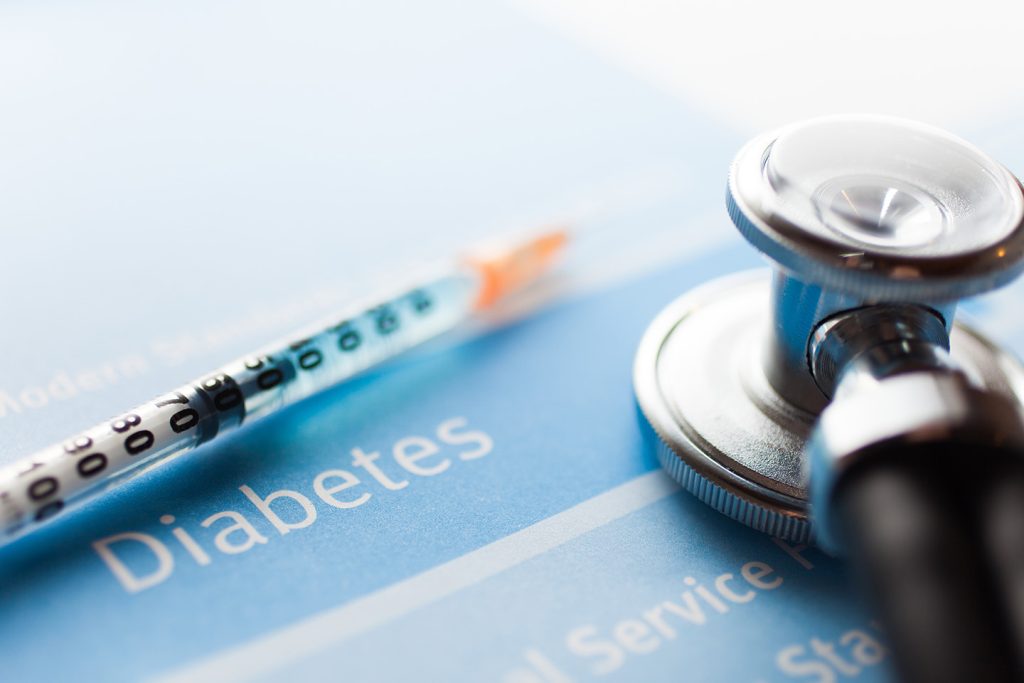Diabetes, a long-term metabolic disorder, is a chronic disease that can affect people of any age. The studies show its upward trend with approx. 537 million people affected worldwide, and around 101 million people in India, which implies that nearly 11.4% of the country’s total population is diabetic. Nearly three decades ago, Type 1 Diabetes was predominant in younger people. But now, the number of young people affected by Type 2 Diabetes Mellitus has increased exponentially in India, recording nearly 8-10 %. The overall prevalence of prediabetes in the Indian population was estimated at 15.3%, per the studies.
With this severity and onslaught of the disease, diabetes prevention, and control, need a proactive approach and management. Awareness about the disease and the reasons for its prevalence, especially in young people, would enable halting its spread at an early stage through control management and treatment.
The blog discusses diabetes, covering its types, their incidence in children and young adults, and the needs to control and prevent it through medications and lifestyle changes.
Diabetes- a metabolic disorder
Diabetes is a long-lasting condition of high blood sugar levels in the blood. The pancreas, an organ behind the stomach, is a source of insulin. Insulin is a hormone that helps the body to convert food into energy. It helps the cells to absorb sugar from the blood and convert it into energy. It balances the sugar requirements of the body.
Sometimes, the pancreas fails to function properly. It stops producing insulin or does not produce enough insulin to regulate blood sugar, or the insulin produced is not effectively used by the cells, known as insulin resistance. Any of the condition results in the storage of glucose in the blood, causing diabetes. Diabetes affects the metabolism of the person, i.e., the way the body converts food into energy.
Types of Diabetes
Diabetes presents various challenges, and it becomes more challenging when it affects children and young adults. However, early diagnosis of diabetes helps manage it effectively through medication and lifestyle changes, depending on the type of diabetes. The types of diabetes that affect young adults are-
- Type 1 Diabetes (Type 1D) – Type 1D is an autoimmune disease where the pancreas stops producing insulin or produces insufficient insulin to regulate blood sugar. Type 1D is also known as juvenile diabetes or insulin-dependent diabetes. It generally occurs in childhood or adolescence but may occur in adults.
- Type 2 Diabetes (Type 2D) – When the body fails to use the insulin properly, there is glucose build up in the blood. The cells do not react to insulin as they should in absorbing the glucose to convert food into energy. They become insulin resistant. Type 2D is a slow-developing condition with its symptoms progressing over time. But if left untreated, it has severe implications that could damage the cells in the long run. The body turns to tissues, muscles, and fat for energy, eventually damaging them. The condition severely affects the kidneys, eyes, heart, gums, and extremities. It is hereditary. Hence, people with a family history are at the risk of acquiring it. Prediabetes and metabolic syndrome (a group of conditions like high blood pressure and high cholesterol) are also responsible for Type 2D.
- Gestational Diabetes – Gestational Diabetes is diabetes diagnosed during pregnancy. The blood sugar levels rise and affect how the cells absorb glucose. This condition is during the pregnancy and the glucose generally attains its usual level after the pregnancy. Excessive weight gain and hormone changes in a pregnant woman may be responsible for this condition.
- Maturity- Onset Diabetes of the Young (MODY) – MODY is a type of diabetes caused by a mutation in a single gene. When a child inherits this mutation from one of his parents, there are chances of his developing MODY at an early age, irrespective of his weight or lifestyle. It is different from Type 1D and Type 2D. It is rare and often mistaken for the other two types of diabetes. Diagnosing the condition early is necessary for its proper and timely management. There are different types of MODY. As an inherited form of diabetes mellitus, it is unfortunate for those young adults who are affected by it in the prime of their lives.
Incidence of Type 1D in young adults
The incidence of Type 1D is high in children, with family history, age, or genetics acting as contributing factors. The number of cases of Type1D reported as per studies in children under 14 is approx. 96,500, with nearly 15,900 new additions to the group every year. This data and the emerging surge of Type1D young patients is of concern as-
- The health complications associated with the disease include damage to the heart, and heart vessels, kidney, nervous system, skin, eyes and/or pregnancy complications.
- The disease does not have a known cause or any cure. The patient is dependent on insulin administration for a lifetime for survival. In light of this, monitoring, control, and management of the disease take utmost preference.
Incidence of Type 2D in young adults
Type 2D was earlier called adult-onset diabetes, but now it also affects children and young adults. The factors responsible for the early onset of diabetes are attributed to childhood obesity, a sedentary lifestyle, lack of physical activity, stress, depression, and unhealthy habits. This is alarming as there are rising cases of Type 2D in young people who have years ahead of living managing insulin resistance. The youth onset of Type 2D is different than the adult-onset of this diabetes. In youth, the disease progresses aggressively, and they are at a higher risk of developing early complications if not treated timely. The good news is that Type 2D is preventable through proper control and management.
Since Type 2D is preventable, efforts in the right direction can yield positive results in preventing the disease from aggravating. This could be achieved through diabetes diagnosis, regular monitoring of health through diabetes testing, rigorous control and management with medications, and positive lifestyle changes that would incorporate healthy eating, regular exercises, weight loss, and stress management through meditation or other alternate modalities.
Incidence of Gestational Diabetes in women
There is a high prevalence of gestational diabetes in India, as reported. The reasons are a lack of awareness about the condition, insufficient resource allocation, and high hesitance for medical help from large sections of society. Estimates show that nearly 4 million women are affected by gestational diabetes at any time.
High sugar levels in a pregnant woman can cause complications in pregnancy and affect her and the baby’s health. Women with unmanaged or poorly managed gestational diabetes will likely have high sugar levels, leading to type 2D in the long run. The condition is more of a concern since it may cause complications to the baby’s health. This may include the baby being overweight at birth, having early birth, low blood sugar levels, breathing difficulties, chances of future obesity and Type 2D in the baby.
Women planning pregnancy must consult their healthcare provider and manage their blood sugar levels to avoid developing gestational diabetes. They must ensure regular check-ups, adequate monitoring, and control through diet, doctor-prescribed exercises, and medications.
Conclusion-Emerging Health Crisis
Diabetes is chronic and no longer a disease in adults. The young generation is at the potential risk of severe and life-threatening complications if not managed and controlled timely and adequately. The incidence of diabetes is detrimental to the health of an individual. It is more in the cases of young patients. The reason is the disease is highly progressive in youth.
Diabetes in young people is an emerging health crisis. It has raised its head, and the statistics justify the concern and need for exploring preventive methods and developing new treatment options so that these young people can experience better and healthier lives. In the meantime, timely diagnosis, regular monitoring, stringent control, and management of the condition appropriately through medications and lifestyle changes must never be compromised.
References
https://pubmed.ncbi.nlm.nih.gov/37069712/
https://www.bbc.com/news/world-asia-india-65852551
https://www.indianpediatrics.net/mar2019/mar-189-190.htm
https://www.mayoclinic.org/diseases-conditions/type-1-diabetes/symptoms-causes/syc-20353011
https://www.cdc.gov/diabetes/basics/diabetes.html
https://www.healthline.com/health/type-2-diabetes#causes




